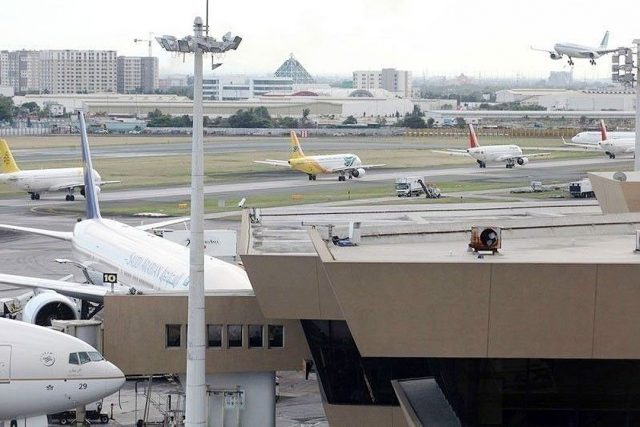Entrepreneurship, by its very nature, entails innovation, risk-taking, and the creation of value, all of which are key drivers of economic growth and development. It was the entrepreneurial mind that created the steam engine, mechanized industry, and the internet. So, it not only makes sense for a society to encourage entrepreneurs, but enable, support, and empower them.
Unfortunately, there is a troubling disparity in the number of women who become entrepreneurs compared to the men. According to data compiled from the We-Data project of the Women Entrepreneurs Finance Initiative (We-Fi) from 2014 to 2020, all over the world the share of female entrepreneurs tends to be lower than the share of male entrepreneurs in the three categories: the owners of limited liability companies, directors of limited liability companies, and sole proprietors.
In fact, in all 81 economies in the study, women represent on average 1/4 of new business owners and directors while men stand for 3/4 of new business owners and directors.
“The rates of female participation for sole proprietors are slightly higher. The average share of female sole proprietors is about 1/3 compared to 2/3 for the average share of male sole proprietors. In a few rare instances, there are more female sole proprietors than male sole proprietors. This is the case in Austria, where women represented 54% of new sole proprietors in 2020,” a report published by the World Bank said.
However, the report noted that sole proprietorship typically signifies small scale, low-profit and low-risk businesses, and notably does not protect personal assets of entrepreneurs as well as limiting them in their expansion.
“While this type of company can be a good way to enter formal entrepreneurship, it can prevent women from growing their business,” the report said.
An economic issue
When comparing the percentage of women in the entrepreneur population to the adult population, there are bigger disparities. In Somalia, despite comprising 50% of the adult population, women only represent 2% of new business directors. These gaps highlight deeper societal inequalities and access barriers to institutions, often exacerbated by weak rule of law.
In this context, gender inequality is not only a moral and social issue, it becomes an economic one. According to a 2015 study by McKinsey Global Institute (MGI), the global economy could expand by as much as $12 trillion by 2025 by closing gender gaps in work and society.
“A ‘best in region’ scenario in which all countries match the rate of improvement of the fastest-improving country in their region could add as much as $12 trillion, or 11%, in annual 2025 GDP (gross domestic product),” the study found.
“In a ‘full potential’ scenario in which women play an identical role in labor markets to that of men, as much as $28 trillion, or 26%, could be added to global annual GDP by 2025. MGI’s full-potential estimate is about double the average estimate of other recent studies, reflecting the fact that MGI has taken a more comprehensive view of gender inequality in work.”
Needless to say, an economy cannot operate at its full potential if half of its population cannot fully contribute to it. Women all over the world only contribute to 37% of the global GDP, according to World Bank estimates.
A bigger loss is that of opportunity. When women become entrepreneurs, they not only contribute to the overall economic output but also bring unique perspectives, insights, talents, and solutions to the forefront, enriching the business landscape and fostering diversity and inclusivity.
Social impact
Moreover, women’s entrepreneurial activity goes beyond economic considerations; it has broader societal implications. Women-owned businesses often prioritize social impact, community development, and sustainable practices, thereby contributing to social welfare and environmental sustainability.
Researchers at Columbia Business School and Carnegie Mellon University found that women are more motivated by messages about social impact than by those about money, while men are more motivated by messages about money. This was determined by looking at how entrepreneurs responded to messages about money and social impact.
“Our findings suggest that it’s important to have a broader conceptualization of the motivations of innovative entrepreneurs that focuses on motivations beyond profit, and that accounts for fundamental dimensions of heterogeneity such as gender and culture,” Jorge Guzman, assistant professor of management at Columbia Business School, who coauthored the study, said. “The results can inform interventions that foster innovative entrepreneurship policies and programs.”
There is also the importance of representation. Women entrepreneurs serve as role models and catalysts for change, inspiring other women and girls to pursue their entrepreneurial aspirations, challenging traditional gender norms, and empowering communities.
Barriers
But what bars equality? One of the most significant ones is education. The We-Fi report found that there are lower secondary education completion rates for women compared to men, particularly in regions like South Asia and Sub-Saharan Africa, where business entry rates are also low.
“In South Asia, 60% of men have at least some secondary education, compared to 40% of women. In Sub-Saharan Africa, 39% of men have at least some secondary education, compared to 29% of women. South Asia and Sub-Saharan Africa tend to have the lowest levels of business entry — with a median new business density below 1 new limited liability company per 1,000 adults,” the report said.
“Economies where women have more years of education also have relatively higher numbers of new female entrepreneurs, at the level of both business owners and sole proprietors.”
Access to technology, including smartphones and mobile internet, is another crucial determinant, with a persistent gender gap hindering women’s entrepreneurial endeavors, especially notable amid the COVID-19 pandemic, where digital connectivity became paramount for business operations.
According to the study, about 327 million fewer women than men have a smartphone and can access the mobile internet worldwide. Women are 26% less likely than men to have access to a smartphone.
Both financial and digital literacy are essential to doing business post-pandemic, and governments all over the world can stand to benefit from a stronger push to promote them.
More difficult to address — and perhaps more significant — are the invisible barriers. Ingrained cultural beliefs and invisible barriers perpetuate gender inequality, with biases against women still prevalent, hindering their full participation in the economy.
“Economic bias still exists in many economies. Overall, 40% of men and women feel that men make better business executives and that men have more right to a job when jobs are scarce in 2020,” the report found.
“This is part of the invisible barriers that women face in achieving equality. Measuring those barriers and quantifying the various sides of the equality gap help design better policies and provide a level-playing field for all.”
Women entrepreneurship in the Philippines
Through the implementation of multiple financial inclusion policies that prioritize technology and entrepreneurship, the Philippines has achieved significant progress toward gender parity and financial inclusion.
According to a study by the Asian Development Bank (ADB) titled “Measuring Progress on Women’s Financial Inclusion and Entrepreneurship in the Philippines,” as of 2020, the MSME sector numbered more than 950,000, the majority of which were owned by women. This advancement of women’s empowerment and financial inclusion are bolstered by digitization and digital finance. However, it is not without its problems.
After market access, the second biggest obstacle to MSMEs’ expansion was their lack of access to cash and credit. Due to the traditional assessment procedures that underpin financial institution services, small firms, and particularly women-owned and micro-enterprises, still face challenges in obtaining financing.
Compared to one-third (37%) of men-owned MSMEs, more over half (58%) of women-owned MSMEs identified difficulty obtaining financing. Because they believe that the application procedures, paperwork needs, and costs are more complicated than those of men-owned MSMEs, women-owned MSMEs are less likely to apply for funding.
The use of financial services and products by male and female entrepreneurs also differs significantly based on gender. According to the ADB data, since personal accounts are used by most women-owned MSMEs for business transactions, they have limited access to other financial services.
Comparing them to men-owned MSMEs, 39% of male entrepreneurs utilize business or merchant accounts, while only 17% of women entrepreneurs do. Moreover, when compared to their male counterparts, it was found that female entrepreneurs utilize fewer banking services for a variety of accounts and associated services.
“Awareness and comprehension of the benefits associated with opening a business or merchant account need to be enhanced for women to deepen their use of financial services, and strengthen and grow their businesses,” the ADB report said.
“Only 4% of WMSMEs (compared with 14% of men-owned MSMEs) use invoice financing and 9% had a business loan (compared with 12% of men-owned MSMEs). However, 27% of WMSMEs save for emergencies versus 19% of men-owned MSMEs.”
A lot of MSMEs continue to conduct business using personal accounts. According to focus group discussions from the study, micro and small businesses believe that applying for business loans in their own names is simpler, quicker, and less expensive than utilizing business accounts.
There is also the fact that less than 20% of respondents who operate small businesses said they have used business loans, overdrafts, invoice financing, or letters of credit. This suggests that a significant fraction of small enterprises is “banked but not yet banking.”
Finally, despite the fact that digital financial services (DFS) are essential to financial inclusion and women’s empowerment, there remains a significant gender gap in the use of these technology and services: While 44% of male-led MSMEs adopted such services, just 28% of female-led MSMEs do the same.
Addressing such issues will be a long and arduous process for the government and the Philippine financial sector. However, there are some low-hanging fruit that the ADB recommended picking first.
“Having available and up-to-date statistics on MSMEs segregated by gender remains the main challenge in developing and implementing effective policies and strategies to support MSMEs in general and WMSMEs in particular,” the ADB pointed out.
“As of 2022, there are no reliable data or information on WMSMEs, which hampers the understanding of the WMSME market size and use of financial products and services. Data on MSMEs include information on the type of enterprise, sector, and regional distribution, but are not sex-disaggregated.”
As data on MSMEs could be easily collected when firms register for the required permits (barangay, DTI, SEC, etc.), this simple process would do a lot to help strengthen efforts to address the gender gap.
Bolstering digital financial infrastructure could also provide a large impact in the pursuit of financial inclusion and gender parity, as less than a third of all women entrepreneurs benefit from digital financial services.
“Social networks play an important role in exchanging information and experiences, particularly for WMSMEs. Awareness-raising campaigns on digital financial services and platforms supported by the government and its agencies foster trust and confidence in DFS,” the report said.
“The goal is to enable female entrepreneurs to obtain and use the services, know the benefits of using them, and be confident in using them, enabling them to make informed financial decisions. The government needs to invest more in education and awareness-raising initiatives and leverage community structures to support such campaigns and programs. All players need to work closely together, ensuring synergies and complementarity to foster the use of financial products and services, aiming at increasing the financial inclusion of MSMEs, particularly WMSMEs.” — Bjorn Biel M. Beltran





















